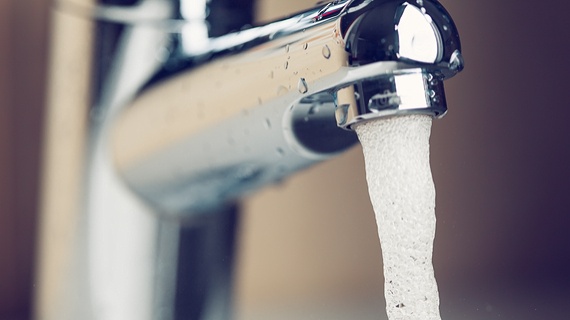
It’s not quite up there with such universally (and historically) perplexing – and unresolved questions - such as what came first, the chicken or the egg? Where does nougat actually come from? What is dark matter? And is there one move that's more likely to win a game of rock-paper-scissors? Yet nevertheless ‘Do you need Thermostatic Mixing Valves?’ (to tackle the potential threat of legionella) is a biggie which could do with a definitive answer; providing that there is an all-enveloping one of course. To begin with, we need to understand what a thermostatic mixing valve (often abbreviated to TMV) is, and determine its primary use in various situations. In a sentence; thermostatic mixing valves are designed to maintain and restrict the mixed hot water to a desirable, selectable temperature. Desirable being the operative word on two critical counts from the get-go. Firstly to effectively minimize the likelihood of scalding; and secondly from an angle which focuses on the limiting of threats from legionella bacterium.
Did you know, for example, that over 90% of scalding incidents are reported to have taken place in our homes, whereby the tender skin of both young children and the elderly (as well as the handicapped) increases the vulnerability and susceptibility to hot water burns? One of the underlying issues with regards to the how and why some people find themselves unwittingly exposed to scalding in familiar scenarios and elsewhere is that water heaters tend to be set to temperatures in excess of 55°C; which is one of the optimum temperatures to guard against the probability of harmful, water-borne bacteria such as legionella taking root in a storage tank/system. Unfortunately water temperatures above 41°C is the threshold generally considered to be painful to the touch, whilst any of the aforementioned risk groups coming into direct contact with water temperatures of 55°C can result in scalding in under 4 seconds of exposure. So herein lies a significant problem, and one which can only be remedied by the introduction of TMVs.
But before we address this, let’s recap as to what everyday water system scenarios are deemed potentially dangerous, when it comes to the advent of legionella forming in its presence. These can routinely include the likes of hospitals and healthcare premises (where individuals might be susceptible to respiratory problems), sports clubs and changing rooms (which are intermittently facilitated and typically house a number of showers), spa baths (pose a specific problem because the water is at an optimum temperature, which actively promotes the unseen sustenance by which legionella bacterium thrives; including dirt and dead skin cells), hotels (which are traditionally home to as many showers as they have bedrooms, all of which can produce aerosol spray), car washes, windscreen water in cars and dental suites to name but a few.
Examining domestic settings which are prone to encouraging the spread of legionella bacterium, in addition to the abovementioned public-facing situations, and instances of dead legs in old systems (in the aftermath of pipework alterations), un-monitored cold water storage cisterns (which often contain organic deposits which collect as a sludge in the bottom of the cistern), oversized water cisterns (habitually reduce the risk of the building running out of water, yet conversely can lead to water stagnating), incorrectly positioned outlet pipes and inadequate thermal insulation all offer a means by which to support legionella bacteria.
TMVs Provide the Perfect Blend of in-built Security to Safeguard Users against Dual Threats of Legionella and Scalding
Now that we’ve established the key variables, it’s prudent to returning to the core topic of thermostatic mixing valves; and the imperative role TMVs can play in reducing the threat of both legionella and scalding when employed. As we’ve already ascertained it’s imperative that stored water never dips below the 45ºC mark, and is ideally maintained at between 55ºC and 60ºC to ensure that the bacterium isn’t afforded the perfect conditions for it to take hold. Yet at the same time it’s equally important to have access to water – via taps, showers, etc – that isn’t likely to scald the end user. Ergo a TMV presents itself as the model solution to the dilemma, and stands as the most effective way in which to prevent both legionella and scalding. In Layman’s terms the technology within a TMV allows for the storage and distribution of water continually stored at a high temperature (to eradicate the threat of legionella bacterium), however successfully fuses it with cold water prior to it reaching the outlet which individuals come into first contact with (i.e., taps, shower heads). TMVs are normally fitted either at, or in very close proximity to, hot water outlets so to offer the best results.
In terms of existing laws on the practice, or rather, placing of thermostatic mixing valves, and current legislation dictates (Part G of the Building Regulations Act) that TMV technology must be fitted as standard procedure on baths in new build homes, yet there’s no equivalent regulation to cover existing properties. So summarising our findings and revisiting the titular question, we’d say that ‘yes’, utilising a TMV (in a domestic surround and commercial setting whereby the public interact with static water) is a must in the battle to deter the threat of legionella and the subsequent risk of individual service users contracting Legionnaire’s Disease; but as a footnote, there’s no actual jurisdiction to instil such thinking/practices as part of the broader picture as we write.







